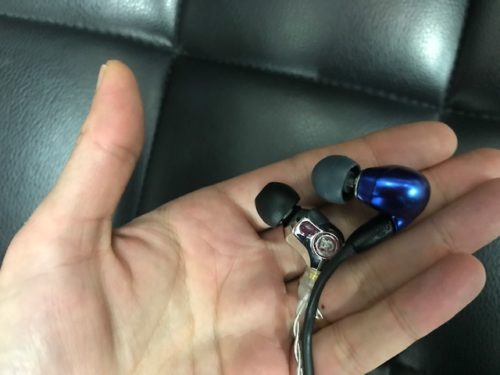Here are two big-timers with great bass extension. They’re in the same price range, but they offer pretty different sound signatures. My colleagues have written extensively about both, the Atlas and the SE846 here and here. This review is for you kids who are familiar with at least one of these models but still want to shop around. Which IEM is better suited to your listening taste? Let’s find out in this Campfire Audio Atlas vs Shure SE846 Review.
Campfire Audio Atlas vs Shure SE846 Review
FIT
We’ve got a pop-in versus an around-the-ear design. If you hate fiddling with wires and like a quick in and out experience (that’s what he said), then the Atlas is a great option. Unlike most high performance IEMs, the Atas avoids the memory wire. But if primo sound isolation is your priority, then it’s hard to be Shure. Because of its steal design, the Atlas also feels heavier to wear. And the tips are so wide that sometimes I’d have to adjust the fit in my canals to hear the sound.


DESIGN
The Atlas uses one dynamic driver, while the SE846 house 4 balanced armature drivers. So, in theory, you can expect big, bassy sound from the Atlas, while the SE846 should present a more controlled feel.
Both IEMs use MMCX connectors on their cables. But the Atlas comes with a fancy ALO Litz cable, which is used on almost all Campfire models. The cables on both models have an equal amount of thickness. But the difference here is that Shure has included two extra cables; one wireless and one with mic and remote. The Bluetooth 4.2 cable is about 100 bucks when sold separately, so it’s a great bang for your buck. The Atlas has no mic and remote.

Also included in Shure’s package is 2 extra pairs of filters that will change up your sound signature. So, if you want a profile that’s a little lighter on the bass or one that is more for reference listening, you have that option. With the Atlas, it’s always all about that bass.
SOUND
Overall Impressions: The mammoth sound of the Atlas vs the versatility and skill of the SE846.
Lows
The Atlas will give you a much bigger and more forward leaning bass. That’s saying a lot, considering how generous the bass is on the SE846. So, if your priority is balance, you should probably go for the SE846. In fact, if you listen to genres involving acoustic instruments, like classical or jazz, the SE846 is a safer bet. Playing some double bass tracks, the lows were so heavy and resonating on the Atlas that some of the nuance and resolve was lost. The SE846, on the other hand, offered a more realistic presentation of the instrument, as it retained the subtleties in timbre and tone.
Mids
If you like an even midrange, you might prefer the Atlas. The low mids come out to play more, and vocals are nicely placed within the mix. It’s warm and full-bodied, giving rock choruses a massive feel. But if you prefer a more dynamic sounding midrange, you might lean towards the SE846. Vocals sit more forward, and in general, the high mids have more emphasis. And again, if you listen to a lot of acoustic music, like folk, you’ll get a more natural feel from the SE846. Strums in the lower-mids, for example had better separation and resolve on the SE846, giving the guitar a slightly more realistic sound. And playing Tobias Jesso’s The Wait, the layering of the two guitars was cleaner.
Highs
Listening violin solos in the highest registers, the Atlas presents a brighter, more buoyant profile. But again, if I had to choose which IEM conveyed a more authentic feel, it would be the SE846. You’ll just hear a tad more substance. And moving on to pop, the SE846 proved to have more snap and sparkle, pronouncing high-pitched percussion more skillfully that the Atlas.
Soundstage
I was impressed with both IEMs in terms of spaciousness and sense of dimension. Perhaps the Atlas feels a little wider. But because the SE846 has slightly better separation or layering, instruments that were placed far away retained their richness and color more than they did on the Atlas.
SUMMARY
If you need serious oomph in your life, you’ll be hard pressed to find anything that sounds as yuge as the Atlas. But if you listen across all genres, and you need a versatile, trustworthy IEM, then I would stick to Shure’s all-star.
You can find both IEMs for the best price at:
Amazon: Shure SE846-CL Sound Isolating Earphones with Quad High Definition MicroDrivers and True Subwoofer
MajorHiFi may receive commission from retail offers.
MAJORHIFI may receive commissions from retail offers.








